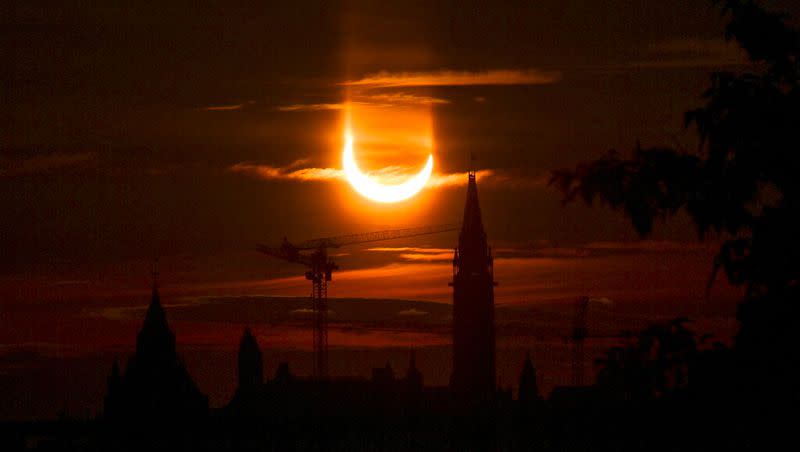A rare total solar eclipse is happening this year. Here’s everything you need to know

Many will remember the total solar eclipse back in 2017, when the moon completely blocked out the sun during the day.
If you didn’t get a chance to see it in 2017, you have another opportunity this year on April 8.
Where is the best place to see the 2024 eclipse?
According to NASA, the total solar eclipse will begin over the southern Pacific Ocean before crossing over Mexico and eventually into the United States.
Did you know that the total solar eclipse this April will last twice as long and will have a wider path than the eclipse in August 2017?
This eclipse will also look different since the Sun will be more active. Learn more about how this eclipse compares: https://t.co/3RJmAcAWzS pic.twitter.com/o2WHhhXBHC— NASA Sun & Space (@NASASun) February 2, 2024
According to NASA’s calculations, the sun will be completely covered for about three to four minutes, depending on your location. The following list from NASA details which cities have the best opportunity to see it.
Dallas, Texas.
Idabel, Oklahoma.
Little Rock, Arkansas.
Poplar Bluff, Missouri.
Paducah, Kentucky.
Carbondale, Illinois.
Evansville, Indiana.
Cleveland, Ohio.
Erie, Pennsylvania.
Buffalo, New York.
Burlington, Vermont.
Lancaster, New Hampshire.
Caribou, Maine.
What is special about the 2024 solar eclipse?
According to BBC, this total solar eclipse will last longer than its 2017 counterpart. That means more people get to see it (BBC estimates there are about 31.6 million people living in the total solar eclipse’s path).
NASA is expecting to see the sun’s outer atmosphere, known as the corona, during the total solar eclipse. Normally you can’t see it because of how bright the sun is.
CNN reports that the total duration of the eclipse can last several hours, since there will also be partial eclipses as the moon travels in front of the sun.
A breathtaking celestial event is happening soon…
Mark your calendars for the total solar #eclipse crossing North America on April 8. Here are a few differences between the 2024 eclipse and the one in 2017. https://t.co/My3wfdNFIK pic.twitter.com/wIllcI08ok— NASA (@NASA) February 5, 2024
How to safely watch the total solar eclipse
NASA says that anyone wanting to watch the eclipse MUST wear eclipse glasses, a special type of glasses that is thousands of times darker compared to normal sunglasses, to avoid eye injuries.
They also say to not look through a camera, telescope or binoculars during the solar eclipse, with or without eclipse glasses, because it can burn the lens filters.
If you don’t have eclipse glasses, NASA also suggests a method called indirect viewing. This is done by creating a pinhole projector using materials you have at home.
It’s as simple as creating a small hole in a piece of cardstock and using that outside. Instead of looking at the sun, you look at the shadow the pinhole projector creates and see it change shape.
Even though the sun will be covered, NASA still says that there is a risk from the solar rays. They suggest wearing sunscreen and protective clothing, while also being aware of the risks of heat stroke, car safety and COVID-19.

